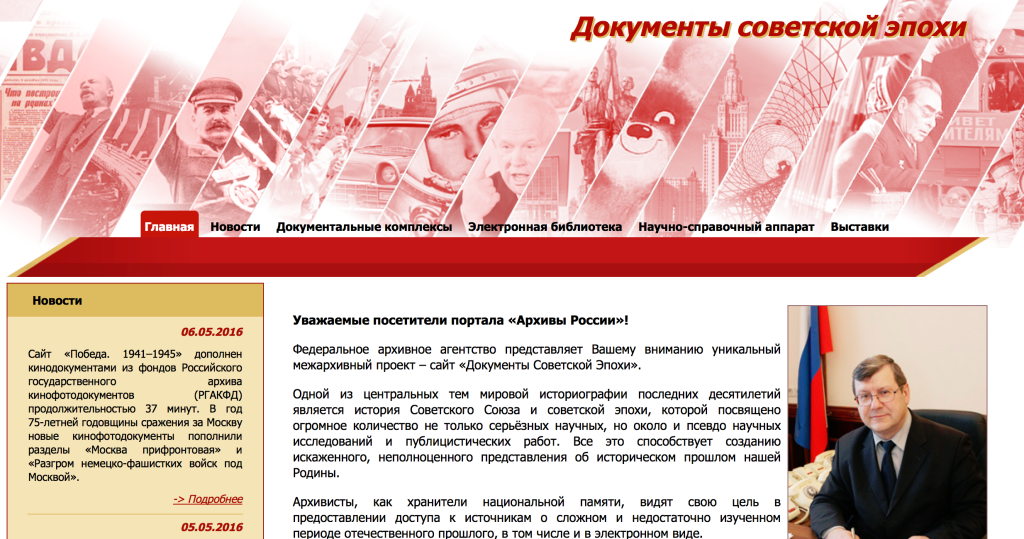In 2015, the Russian government made freely available the scanned papers of the Communist International that had been digitised in the 1990s. Access to this digital archive was limited to a number of universities in Europe, as well as the Library of Congress in Washington DC. The new portal made the thousands of scanned documents free to view, but the portal is only navigable in Russian. This post is an attempt to help people navigate the Comintern archives without knowing Russian.
There are two ways to try and find relevant material using the archive – browse and search.
Start with this URL: http://sovdoc.rusarchives.ru/#main
To browse
On the home page of the archive, choose the third from the left link along the top that says “Документальные комплексы”.


This should lead to a page with four options. Click the second link.


This will bring a long list of links in Russian organised by fond (for example, Ф.495. Оп.3.) If you use the LOC guide, you can try to locate specific fonds. For example 495/3 is the fond of the ECCI Political Secretariat.



Once you click on this link, you will find a page describing the fond. In the bottom left hand corner, there is a hyperlinked number.


Once you click on this link, you will find links broken down by individual file. For example, Дело 1, 2, 3, etc. In the 495/3 fond, there are 513 individual files.

If you have a reference for a particular file in a book/article/thesis, it will usually say something like RGASPI 495/3/1. This is the level that each reference is broken down to usually.
Included in each link is a short title of the file in Russian. For example, the first link (495/3/1) is “Protocols and materials to the minutes of the Political Secretariat of the ECCI meeting”. On the right is the date scope for the file.

Once you click on a link, it will take you a page with further information about the file.


In the bottom left hand corner, it will have the words “Количество графических образов” (number of graphic images) and a hyperlinked number.
If you click on the hyperlinked number, you will be taken to an image gallery, with an individual thumbnail for each scanned page, organised into pages of 20 thumbnails.

If you click on a thumbnail image, it will bring up a gallery where you can easily browse through each individual page. However each page of 20 has its own browsing gallery.

Remember that the various bodies of the Comintern were based in several European cities, such as Moscow, Berlin and Brussels, so the documents are in several languages, including Russian, German, French and English.
To search
To search requires a little ingenuity. To find the search bar, once again, choose the third from the left link on the top on the archive’s home page. As you can only search in Russian, I use a translation tool (such as Google Translate) to translate possible search terms into Russian and then cut and paste into the search bar.



This can be hit and miss, but if you keep it broad like ‘Ireland’, ‘Australia’ or ‘imperialism’, for example, then you will find some stuff. Some of the fonds listed are not currently available, due to some arrangement between the Russian government and Yale University, but most stuff from the 495 series is available.

Once the links to each file come up, follow the above steps to view each individual image.
Printing/Saving
As these images are all JPGs, they can be individually saved by the viewer. Once downloaded, I have found that printing from those saved images is the best way.
Happy archive exploring! If these steps are helpful, please let me know. If anything is unclear, let me know also.
Leave a comment